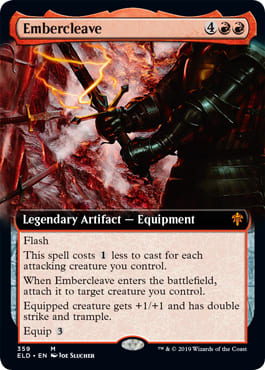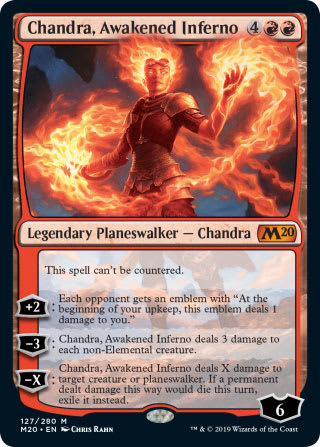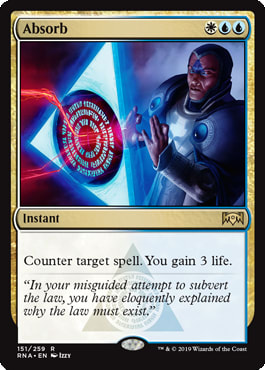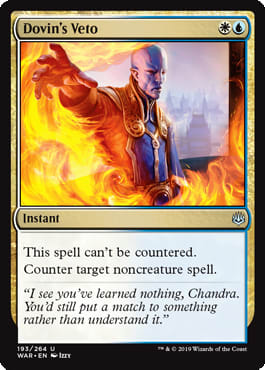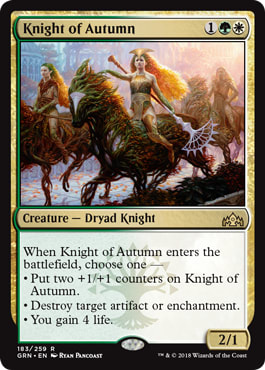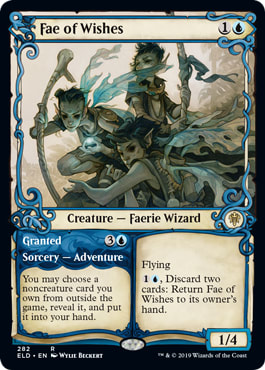Play Mono-Red, and be kind-of good at it.
Really, that's enough. But if you want other options, read on.
It isn't hard to get to Mythic in MTG Arena playing Best-of-one (BO1) if you are willing and able to play Mono-Red Aggro well for a period of time. If you enjoy midrange, control, or combo archetypes, things are harder. What you should do if you are looking to optimize your time is play Best-of-three (BO3) and use sideboarding to fine-tune your selection of reactive spells based on what your opponent is playing. Using this method you can get to Mythic with any competitive deck given enough time to play the games. What some of us maniacs choose to do is keep trying to make control, midrange, and combo strategies work in BO1. We have to play by a certain set of rules, a different set of rules from BO3 players. Without sideboarding to help us tune our deck, we have to build decks with as few weak points as possible. Here is a deck I recently hit Mythic with in BO1 that I will use as an example as I lay out my rules for Ranked BO1 play in MTG Arena.
Jeskai Chandra Control | Standard BO1 | CGB 03-27-2020
- Creatures (4)
- 4 Fae of Wishes
- Planeswalkers (12)
- 4 Chandra, Awakened Inferno
- 4 Narset, Parter of Veils
- 4 Teferi, Time Raveler
- Sorceries (6)
- 2 Shatter the Sky
- 4 Deafening Clarion
- Enchantments (12)
- 4 Elspeth Conquers Death
- 4 Omen of the Sea
- 4 The Birth of Meletis
This deck came from my attempt to find good homes for Rare and Mythic cards that haven't seen much high level competitive play in Standard, and in this case the mission was to make a home for Chandra, Awakened Inferno.
Is she as good as Dream Trawler? Well, that depends. She isn't strictly worse. She can sweep up a wide board of Satyr tokens that an Anax, Hardened in the Forge might create. Dream Trawler's lifelink may not be good enough to survive an attack from those tokens. Chandra can't be countered! If you have ever had your Dream Trawler hit by Mystical Dispute you know how sad that is. Chandra can exile another planeswalker with 6 or less loyalty the turn she hits the battlefield. Dream Trawler stares at that planeswalker waiting for summoning sickness to wear off. Of course our favorite dreamy sphinx has good qualities too, I just use this example to illustrate that Chandra isn't strictly worse than the popular 6-drop in Standard. Four may not be the actual ideal number, but in this case I was happy to have them.
This brings me to my rules for BO1 Standard.
Rule #1: Be Proactive
In my heart I will always be a control player, so this is hard for me to say. You need to run less counterspells and less one-for-one removal spells in your BO1 decks. Aggressive opponents will run you over. For every game a counterspell saves you, it will cost you another later when it doesn't line up well. Did you go second? Then your counterspell should probably be blank bits. Have you met Teferi, Time Raveler? It seems like he is in every non-Mono-Red Aggro deck and his passive destroys counterspells. The Jeskai list above cut countermagic from the sixty entirely.
#2: Stay Flexible
When Knight of Autumn was printed I remember many players being excited about the options on the card. Some people said it pointed to Wizards putting more design thought into BO1. It turned out that Wizards was just warming up with Knight of Autumn, as the Adventure mechanic has introduced a huge amount of mode-based cards to Standard. On top of that, the Intervention cycle from Theros Beyond Death has introduced even more flexible cards. Getting more options is great as long as it is still a good deal on mana. The format is fast and tempo is important. If your card is too slow on the draw to be relevant, then you can assume half of your games you won't want that card. Options are good, but don't overpay for them. Eat to Extinction is an example of a modal spell that costs too much to be relevant in the current format.
Rule #3: Do better than a 1-for-1 trade
Murder isn't the card it used to be. Three mana to kill a creature isn't a bad deal historically in Magic, but when every creature in the format has haste, an enters-the-battlefield ability, a split-mode from Adventure, every 1-for-1 removal spell you cast drops you further behind in the game. In the old days you could cast Doom Blades until the opponent ran out of creatures, then they would topdeck some lands and blanks, and you could take over the game and use slow card draw effects like Jayemdae Tome to pull ahead. That was before Hydroid Krasis existed, and the Mythic jellyfish beast is exactly why spot removal isn't a strategy anymore. Look at the removal in the Jeskai Chandra deck. Teferi, Time Raveler's bounce effect draws a card. Deafening Clarion and Shatter the Sky kill multiple things. Elspeth Conquers Death removes a thing and gets back a threat. Chandra, Awakened Inferno removes a large threat or sweeps multiple threats and leaves a planeswalker behind most of the time. The deck literally runs zero one-for-one removal, which is weird for a control deck by historical MTG standards.
Rule #5: Don't Miss a Land Drop
If you are like me, this one tilts you a bit. The best-of-one hand smoothing algorithm on MTG Arena shows strong favoritism to cheap, single color aggro decks. If you don't know about the hand smoothing algorithm, it is real, and it applies to BO1 games on MTG Arena in ranked and unranked. You can read a good article about it here, and I don't want to spend time on the math or start rambling about whether true random exists. This is my take, and the TLDR for how you should build a mana base in BO1.
If you play a mono-colored aggro deck that tops out at a few four-drops, you can play 20 lands and be fine. Go up to 22 lands if those four-drops are gamebreakers. Most of your opponents' hands will have two lands, and your draws will feel great most of the time.
If you play decks with multiple colors and you have four, five, and 6-drops in your deck, you should be running at least 26 lands in your decks. The nature of hand smoothing will make aggro decks curve out better, so you have to curve out just as well. If you miss your third of fourth land drop, you are probably dead. 26 lands is the tipping point where the algorithm will show you more starting hands with three and four lands in them. On top of this, if I want to hit my first six or seven land drops, I find ways to play cards that also find more land. The Birth of Meletis has been an essential card for me. If you count these sagas as lands, then the Jeskai Chandra deck is half mana sources. However, with the scry from Omen of the Sea and the fact that nearly every card is a 2-for-1, I rarely run out of things to do.
Another somewhat tilting thing about hand smoothing; you shouldn't run any brown lands. The algorithm will look at a hand with a Blue source, a White source, and The Birth of Meletis and compare it to a hand with Plains, Plains, Blast Zone, and four Blue cards. It will show you the hand without a Blue source because it has the "optimal" amount of land in it. Brown lands are more punishing because of this, and you shouldn't play them in most cases. Poor Mobilized District...
Rule #6: The Sideboard still exists
The unsung hero of many of my BO1 control builds is Fae of Wishes. The Granted Adventure can fetch cards from the sideboard that are perfect for whatever match you find yourself in. Against decks like Temur Reclamation, you still need countermagic to keep them from going over the top, so fetch Dovin's Veto. Heliod's Intervention, Grafdigger's Cage, and others are perfect in the right matchups. There is also an amazing hidden endgame in the sideboard with Finale of Revelation. In grindy matchups we are happy trading resources and hitting land drops because eventually we will draw 10 cards and have no maximum hand size, letting Fae of Wishes fetch the rest of the good sideboard cards at our leisure.
The fact that sideboards exist doesn't apply only to decks with Fae of Wishes. I was very impressed on ladder when my opponent stole my Fae of Wishes with Robber of the Rich, cast Granted, and fetched a Chandra, Acolyte of Flame. If you have ways to steal your opponent's cards like Robber of the Rich or Thief of Sanity, you should take the time to build a wish board.
If you want to hear more about the deck and see some gameplay with it, check out this video.
What rules do you think I left out? Do you treat BO1 ladder differently from BO3 ladder, and if so how?
Thanks for reading, see you next week!













